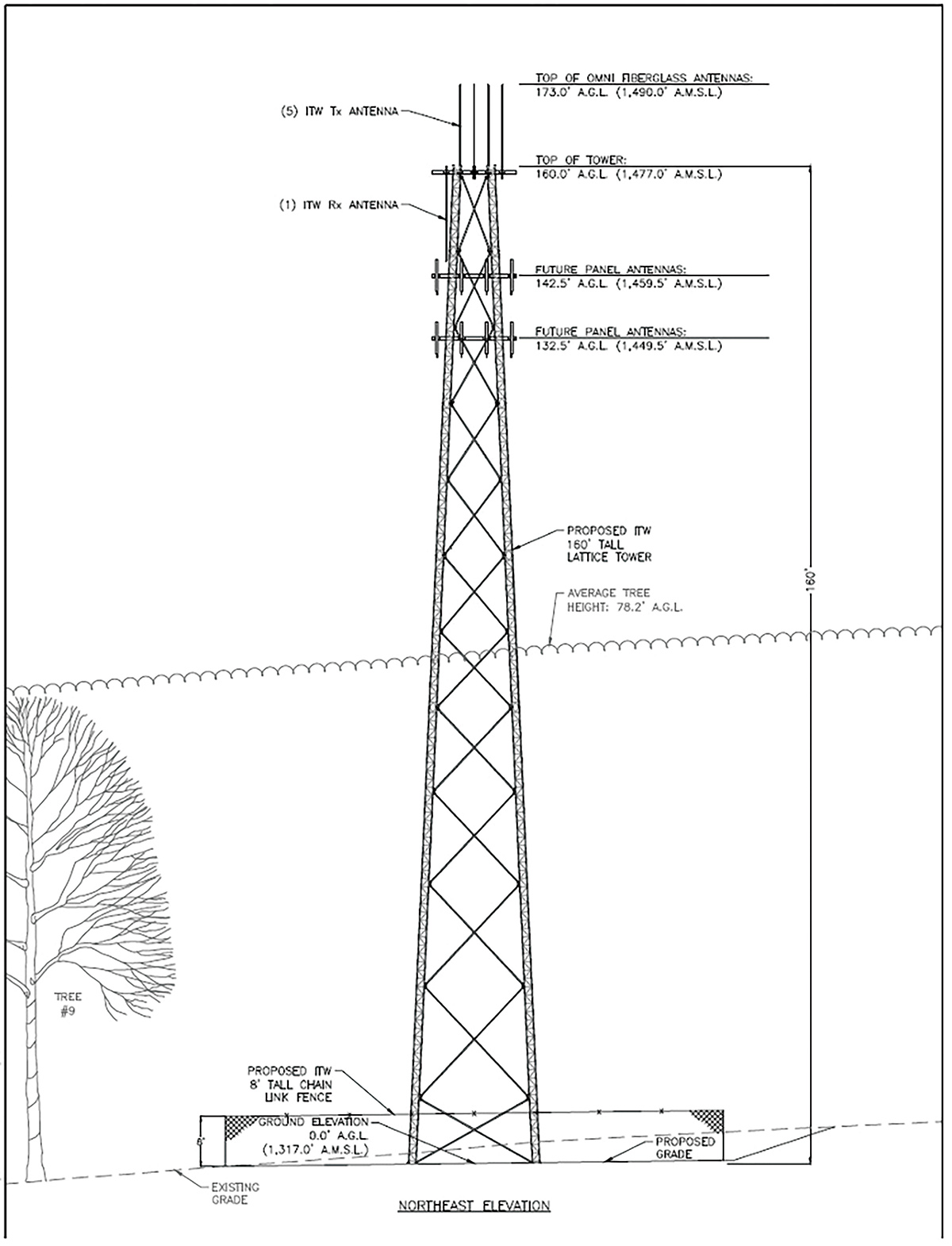By Curt Peterson
Industrial Tower & Wireless (ITW) of Massachusetts has plans to erect a 174-foot steel communications tower on a site on Town Farm Hill Road in Hartland. Obtaining necessary approval for the project is complicated, with opportunities for public and town government input, according to Kevin Reed, whose informed post on the Hartland listserv sparked a lively “conversation.” Reed and his wife live across the road from the proposed tower site.
Reed described the structure as twice as tall as the surrounding trees — equal in height to a 17-story building — and will probably sport a blinking light at the top to warn low-flying pla nes.
Twenty-seven Hartland residents responded to Reed’s post, some multiple times. Most opinions fell into four categories: Aesthetics, need for services, health concerns, and alternative suggestions.
Most of the respondents agreed the tower would change the image of the town, and not in a positive way.
Rob Anderegg summed up his feelings about the tower’s effect on Hartland’s image, saying it would affect the town’s rural character, its blinking light would change the night sky, and that “the town expects aesthetic integrity.”
Minutes of the Hartland Planning Commission (HPC) meeting from Dec. 18, cite the 2017 Town Plan: “No towers taller than existing canopy are permitted,” it says. The HPC has written to the Vermont Public Utilities Commission, which will have final say over approval of the tower, and plans to vote on its own opinion of the proposed tower by Jan. 15.
Contributor Wes Johnson submitted photos of existing towers that have been “camouflaged” for aesthetics — he likens the effect to “putting lipstick on a pig.”
Tom Wetmore added that the tower would be one of the two tallest structures in Vermont.
Trish Aldom and Lori Allen hope some acceptable way to make the tower aesthetically acceptable is found so that the well-known “dead area” can finally get cell phone service. And other contributors pointed out the benefits of better cellular service for emergency communications — fire, police, ambulance, etc. Debbie Davis said she’d be happy to have the tower on her property if she can finally have service. Regie Cooper added that the tower would improve the equitable provision of technology by expanding functioning areas.
But the promise of better service is by no means guaranteed, Reed explained in a follow up email to the Mountain Times. “My read of the application is that they make no promises about if or how the tower will improve cell service. They mention using the tower for their own not-yet-operational network, and they also reference potentially leasing space to other carriers, but as I read it they’re building it on spec,” he wrote.
Lauren Anderson mentioned possible health effects caused by exposure to nearby towers. Frank Warren insisted there is no evidence that towers cause cancer.”
“Unless you climb the tower and hug an antenna, you should have no concern,” Juliette Gorham said.
Toni Vendetti still has some doubts: “I have several friends who are extremely sensitive to these frequencies and experience headaches, nausea and sleep deprivation.”
It seems many people think satellites would be a better choice for cellular networking than towers, but that idea is controversial as well. According to major media outlets, Elon Musk shut off Ukraine’s access to Starlink satellite communications to impede their attacks on Russian ships.
“What if that happens to us?” asked Barb Maltese.
Another correspondent mentioned the possibility that president-elect Trump might disband the Federal Communications Commission, whose job it is to protect Americans’ ability to use communications systems.
In a poll conducted as part of the Vermont Telecommunications Plan, 45.6% of Vermont residents indicated a preference toward a larger number of short towers, compared to 38.9% who favored fewer larger towers and 16.7% who wanted neither option.



